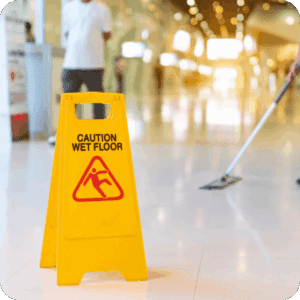Let's start off this post with a question: Which digital marketing tactic do you think is most important?
- Having an optimized website (SEO) with identified keywords also used as part of search engine campaigns (SEM), i.e AdWords?
- Having an email marketing strategy in place, with newsletters sent out to a database of ongoing clients and/or prospects?
- Having a social media strategy in place, with a presence building communities on a variety of identified social networks?
If you answered "all of the above", bravo! In fact, when EyeforTravel and Digital Visitor conducted a survey earlier in 2012 with travel marketers across Europe and North America, these three tactics proved to be the most popular channels for travel brands.

Source: EyeforTravel & Digital Report, april 2012.
I am often approached by clients, or potential clients, asking if I can help with their social media marketing, to make some sense of their ongoing tactics and/or to devise a longer-term strategy. As important as social media may be, in most cases I have to re-frame their question and ask them what they are doing in other aspects of their digital marketing to begin with. That's when I sometimes have to be blunt: if you aren't optimizing your site for search with a solid content strategy and you aren't collecting emails or doing very little with your databases, then social media should perhaps not be your priority! But I am jumping ahead of myself, here. Let's look at the holy trinity of digital marketing, in particular within the travel vertical, in order to better understand how all three should in fact work together, rather than compete with each other in an "either-or" scenario.
Search Engine Marketing
A study by Google and Ipsos MediaCT showed that 65% of leisure travelers start their vacation search online… with no idea of the destination, nor mode of transportation! Thus, online search plays a pivotal role in the decision-making process. It used to be that if your property, destination or attraction showed up on the first page of results, this was considered a good thing. More recent studies found that 55% of people actually click on the very first natural result. And if you combine with the second and third results, this represents 77% of user clicks. Thus, making it to the first page is no longer enough, you must make it within the first three results to stand a chance of getting the much-coveted click to your site.
Ensuring your site gets found by potential travelers searching online is no easy task, so beware of snake oil salesmen who will tell you it can be done with black hat SEO tricks, stuffing hidden pages full of keywords so that search spiders will find your site. These tactics are penalized by ongoing updates to Google Penguin and Panda, which also takes a closer look at incoming links to your site, making sure they are natural and authentic. A strong content strategy is rather where savvy-marketers are focusing to build a site that will cater to customer needs by answering the questions they seek. Among the key tools one will consider: a quality blog and/or FAQ section hosted on the main web site, newsletters archived online, whitepapers and case studies, etc.
Email Marketing
A little over a year ago, I wrote a piece called Email is dead… NOT! Somehow, it seems that debate won't go away and there are many who still believe email is no longer relevant in a brand's overall digital strategy. Yet we tend to forget email remains an extremely powerful marketing tool, with the following key benefits worthy of mention:
- It's a permission-based communication between the brand and the customer. Those who use it well will interact with the customer in a meaningful way, sending useful information and details prior to arrival or check-in, or sending out exclusive offers to keep the interest (and open rates) alive and well.
- There is intimacy in the relationship – the conversation takes place in your inbox, not on social networks. Sharing is therefore optional.
- Brands own the database and its content, which cannot be said about your followers or fans on social networks.
- Messages have longer shelf-life. It's not uncommon to have people open their newsletter 48-72 hours after receiving it, sometimes more.
- Open rates and click-through rates may seem low, depending on industries. In the travel vertical, the global open rate average nears 20%. But how does that compare with Facebook posts, tweets or other messages sent on Google+, Instagram or Pinterest, for example?
I presented the above keynote in June 2012 at EyeforTravel's Online Marketing Strategies for Travel conference and focused on why email marketing remains powerful and why it must be used with social media. Not instead of. Nor as an alternative to.
Social Media Marketing
I love this quote from social media expert and acclaimed author Jay Baer: content is the fire, social media the gasoline! Having a social media presence without the prior strategic thinking and content creation runs counter to successful digital marketing. In other words, yes, absolutely, social media is a required element of an effective digital marketing approach for travel and hospitality brands nowadays, but there must be content to begin with. This content should ideally be hosted on owned platforms, such as a brand website, corporate blog and newsletters, from which it can then spread through the various social networks.
Thankfully (as can be seen in the above infographic), most hospitality brands have understood the potential for building thriving communities on social networks, addressing customer service issues, promoting exclusive offers, researching and surveying clients and managing their e-reputation. Beyond the obvious top 6 social media giants – Facebook, Twitter, Youtube, Linkedin, Pinterest, Instagram – brands must also manage their presence on user-generated content sites such as Tripadvisor, Yelp or Google Reviews, where comments are having a growing influence on travelers around the world.
Let's Not Forget Mobile…
While mobile is not a marketing channel per se, it should be the backbone behind this holy trinity of digital travel marketing tactics. Any quality search engine optimization efforts and marketing campaigns must take mobile into consideration, just like newsletters must be mobile optimized or fade into oblivion. As for social media, one must remember these few stats:
- 60% of Facebook users access their account via a mobile device. This represents 751 million users!
- 1 in 6 Facebook users (or 16%) accesses his account only via a mobile device
- Traditional Facebook ads don't show up on the mobile version, nor do the tabs on a Facebook brand page
- 74% of Twitter users access their account via a mobile device
Of course, there are more than these three tactics to consider for an effective digital travel marketing strategy. One thing is for sure, though: if you are not securing these basics right, perhaps you should not even bother with other tactics and should focus on getting this right to begin with.
Source: Frederic Gonzalo Blog
About the author
Senior marketing and communications expert & speaker with 18 years expertise in the travel and hospitality industry. Consulting since early 2012, I provide strategic planning, social media & mobile development counseling to small and medium businesses alike. Reach me at frederic@gonzomarketing.biz















